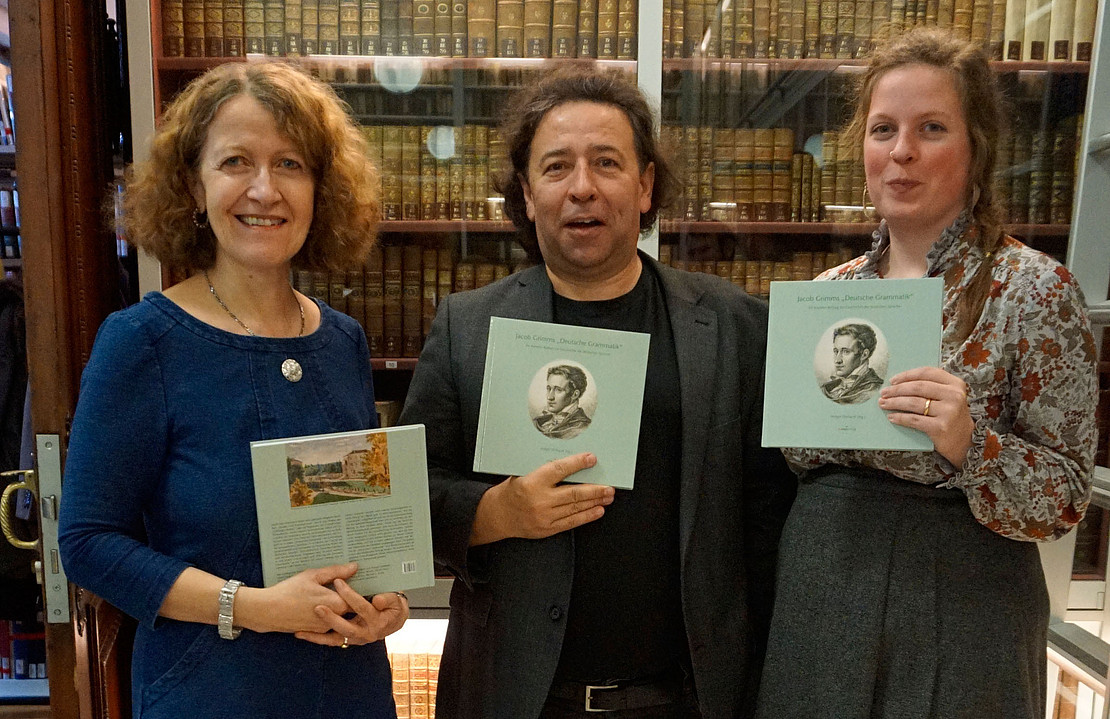This page contains automatically translated content.
New book on Grimm's grammar for the 200th anniversary
 Image: Kemna.
Image: Kemna.Most of the "German Grammar" was written in Kassel. Reason enough to take a closer look at this topic on the 200th anniversary of its first publication in 1819. Prof. Dr. Holger Ehrhardt, research focus Work and Impact of the Brothers Grimm, is the editor of the new anthology Jacob Grimm's "Deutsche Grammatik. A Kassel Contribution to the History of the German Language, with the collaboration of Marie-Louise Lange. The contributionsillustrate the conditions under which this work was produced. They give hitherto little-known glimpses behind the scenes and show how different phonetic laws were discovered in detail and what difficulties there were in printing the volumes.
"While the Kassel Fairy Tale House in Marktgasse has even made it into a postcard motif, most of the places where the German Grammar was created between 1816 and 1840 are forgotten today. This will now change decisively. With this book, an important piece of history of the Kassel region has been responsibly reappraised," said Ingo Buchholz, Chairman of the Board of the Kasseler Sparkasse, at the book launch.
Jacob Grimm's monumental work on the history of the German language cannot be overestimated. After more than 20 years of research, the "German Grammar" was available in 1840 in four volumes with a volume of nearly 5,000 pages. The first volume was already out of print eight months after its publication. "Grimm's Grammar" immediately became a bestseller. In today's times, it is hard to imagine that the interest in linguistic-historical research was so great at that time," explained Renate Matthei, managing director of euregioverlag.
The book examines the structure of the "Grammar" and how it is to be understood in the context of the linguistics of its time. One contribution examines the influence of the "Deutsche Grammatik" on German linguistics, while another points out errors that Jacob Grimm made in its preparation. In addition, it discusses how the Hessian dialect is reflected in the early letters of the Brothers Grimm and how they deal with this phenomenon in their later works. In a concluding contribution, the now forgotten places of origin of this major scholarly project are recalled.
The contributions are illustrated and were written by Holger Ehrhardt, Hans-Werner Eroms, Walter Haas, Philip Kraut, Michail L. Kotin, and Andrea Linnebach-Wegner.
Contact:
Prof. Dr. Holger Ehrhardt
Kurt-Wolters-Strasse 5
34125 Kassel
holger.ehrhardt@uni-kassel.de